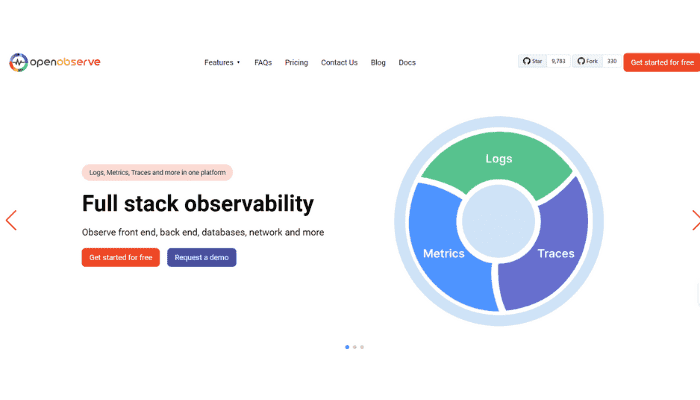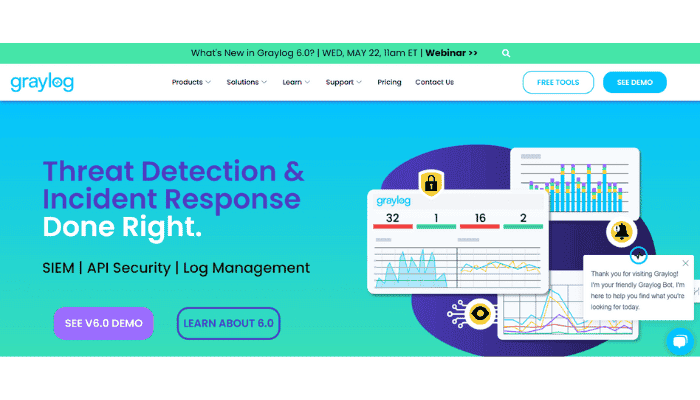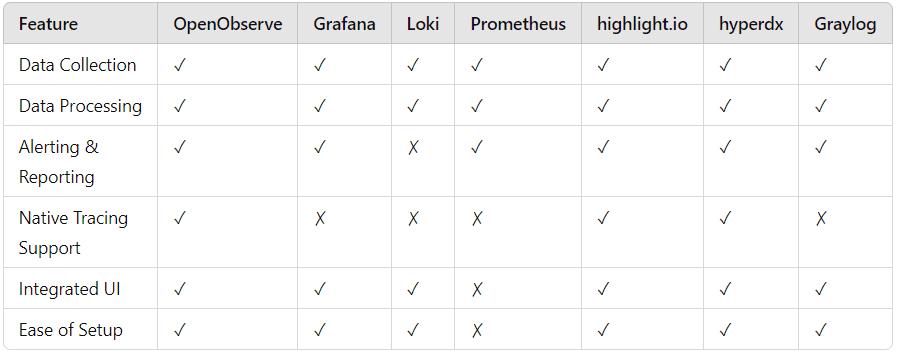
Discover the Best Open Source Splunk Alternatives for Your Observability Needs
Are you searching for a cost-effective open-source Splunk for your observability needs?
With the growing complexity of modern IT infrastructures, it's crucial to have a reliable tool that provides unified security and observability. However, Splunk's advanced capabilities often come with a hefty price tag. Luckily, several open-source Splunk alternatives offer similar features at a fraction of the cost.
This article will compare the top open-source Splunk alternatives and discuss their core capabilities, pros, and cons.
We'll also provide a detailed guide on setting up OpenObserve, a comprehensive observability platform, and share best practices for transitioning from Splunk to open-source Splunk alternatives. Hang tight, and let's dive deeper into how to make these alternatives work for you.
Comparing Splunk to Open Source Solutions
Before exploring open-source Splunk alternatives, it's essential to understand how Splunk compares to open-source solutions regarding features and cost. Splunk offers a comprehensive suite of log management, monitoring, and security tools, but its advanced features come at a premium price point. While sometimes lacking enterprise-level support and certain advanced functionalities, open-source alternatives provide similar core capabilities at a significantly lower cost.
Open-source solutions can be attractive for organizations that prioritize flexibility and customization.
Overview of Core Capabilities Needed in Open Source Splunk Alternatives

When evaluating source Splunk alternatives, it's essential to ensure they offer the following core capabilities:
- Unified security and observability: The tool should provide a holistic view of your IT infrastructure, combining log management, metrics, and tracing.
- Efficient data collection and indexing: It should be able to collect and index data from various sources, enabling quick search and analysis.
- Powerful search and analysis tools: The alternative should offer advanced search and analysis features to help you identify issues and trends.
- Comprehensive alerting and reporting: It should provide customizable alerts and reports to inform you about critical events.
It's worth noting that OpenObserve Inc. covers all these core capabilities, integrating Logs, Metrics, Traces, and Front-end monitoring in one platform, significantly simplifying the observability process.
Top Open Source Splunk Alternatives

Have you got the basics down? Let's zoom in on the contenders shaking up the Splunk-dominated world.
- OpenObserve:

OpenObserve is a comprehensive observability platform that combines the functionalities of critical tools like Prometheus and Grafana into a singular, easy-to-use platform. It offers a unified view of your entire IT infrastructure, enabling you to monitor logs, metrics, traces, and front-end performance in one place.
- Grafana: Grafana is an open-source data visualization and dashboarding tool. It allows you to create, explore, and share dashboards that display data from various sources, including Prometheus, Elasticsearch, and more. Grafana provides a rich set of features for creating interactive and visually appealing dashboards.
- Loki: Loki is an open-source, multi-tenant log aggregation system inspired by Prometheus. It is designed to be cost-effective and easy to operate. Loki indexes only metadata and labels, making it highly efficient for storing and querying large volumes of log data. It integrates seamlessly with Grafana for log visualization and exploration.
- Prometheus: Prometheus is an open-source monitoring system and time series database. It collects metrics from configured targets at given intervals, evaluates rule expressions, displays the results, and can trigger alerts if certain conditions are met. Prometheus is known for its powerful querying language and its ability to handle high-dimensional metrics.
- Highlight.io: highlight.io is an open-source observability platform that provides real-time monitoring and troubleshooting for distributed systems. It offers a unified interface for logs, metrics, and traces, making it easy to identify and resolve issues quickly.
- hyperdx: hyperdx is an open-source observability platform that focuses on ease of use. It provides a unified view of logs, metrics, and traces, along with powerful querying and visualization capabilities. hyperdx is designed to be easily deployable and scalable.
- Graylog:

Graylog is an open-source centralized log management and analytics tool that collects, enhances, correlates, searches, and visualizes log data in one location.
Detailed Comparison of Alternatives
Now that we've introduced our players, let's put them head-to-head and see who really stands out.

While comparing these alternatives, remember to check out OpenObserve, which marries ease of use with comprehensive observability solutions. It offers up to 140x lower storage costs than Elasticsearch, a factor worth considering when budget is a priority!
Real Data of Splunk Open-Source Alternatives
How does this play out in the real world?
Open source is the new norm, with 60% of organizations using open-source monitoring tools, according to 451 Research. The Cloud Native Computing Foundation (CNCF) shows that the most commonly adopted observability tools are open source, as shown in the End User Technology Radar.
Gartner predicts that by 2025, 70% of new cloud-native application monitoring will use open-source instrumentation rather than vendor-specific agents for improved interoperability.
Similarly, clients who have switched to OpenObserve Inc. have reported significant cost savings alongside enhanced observability capabilities, thanks to its unique blend of integrated features and efficient data handling.
Setting Up a Splunk Alternative: OpenObserve
Feeling techy? Let's roll up our sleeves and walk you through setting up OpenObserve.
- Sign up for an OpenObserve account at https://app.openobserve.ai/signup.
- Install the OpenObserve agent on your servers or containers.
- Configure the agent to collect logs, metrics, and traces from your applications and infrastructure.
- Use the OpenObserve web UI to visualize and analyze your real-time observability data.
You can find detailed instructions and configuration examples in the OpenObserve documentation.
Best Practices for Transitioning from Splunk to Open Source
Ready to take the leap? Here are some golden nuggets of wisdom to smooth out your transition.
- Evaluate your requirements: Assess your project's specific needs and compare them against the capabilities of the open-source alternatives.
- Plan your data migration: Develop a strategy to migrate your existing data from Splunk to the new system, ensuring minimal downtime. This could include data backup, phased migration processes, or intermediary solutions that ensure continuity of observability during the switch.
- Leverage community support: Engage with the open-source community to get support, troubleshoot issues, and learn from others' experiences. Consider engaging with communities of comprehensive platforms like OpenObserve Inc., where you can tap into a wealth of knowledge about transitioning to a platform that offers an all-in-one observability solution.
Final Thoughts
Made it this far? You're almost an expert now. Let's wrap this up and get you on your way!
As the observability landscape evolves, open-source Splunk alternatives like OpenObserve, Grafana, Loki, Prometheus, highlight.io, hyperdx, and Graylog have emerged as viable alternatives to Splunk. By carefully evaluating your project requirements and considering factors such as budget and technical expertise, you can select the best open-source Splunk alternative for your needs.
Remember, transitioning to an open-source solution may require effort, but reduced costs and increased flexibility's long-term benefits make it a worthwhile investment.



